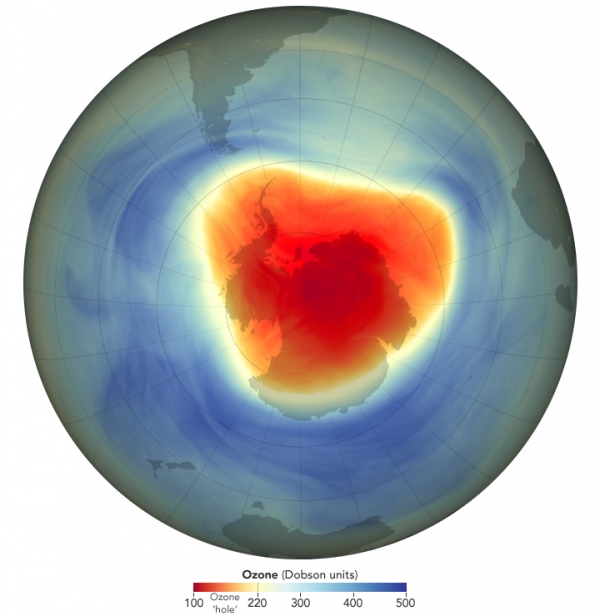A hole that opens annually in the ozone layer over Earth’s southern pole was relatively small in 2024 compared to other years. Scientists with NASA and the National Oceanic and Atmospheric Administration (NOAA) project the ozone layer could fully recover by 2066.
During the peak of ozone depletion season from September 7 through October 13, the 2024 area of the ozone hole ranked the seventh smallest since recovery began in 1992, when the Montreal Protocol, a landmark international agreement to phase out ozone-depleting chemicals, began to take effect.
At almost 20 million square kilometers (8 million square miles), the monthly average ozone-depleted region in the Antarctic this year was nearly three times the size of the contiguous U.S. The hole reached its greatest one-day extent for the year on September 28 at 22.4 million square kilometers (8.5 million square miles).
Read more at: NASA Earth Observatory
Photo Credit: Lauren Dauphin/NASA Earth Observatory
Sustainability Sci/Tech Top Stories

